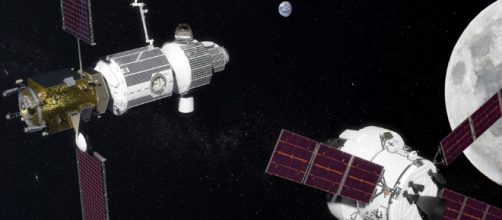Space.com is reporting that, as part of its Journey To Mars program, NASA may conduct a yearlong mission in lunar orbit sometime in the late 2020s. The announcement was made at a recent Humans to Mars Summit that took place in Washington D.C, by Greg Williams, NASA's deputy associate administrator for policy and plans in the agency's Human Exploration and Operations Mission Directorate.
Deep space gateway to be built in lunar orbit
The plan is to build a “Deep Space gateway” in lunar orbit that would test various systems that would be required on the three-year round trip to and from Mars, envisioned as taking place sometime in the 2030s.
Eventually, the facility would serve as a launching point for Mars missions. Astronauts would journey to the deep space gateway on board an Orion spacecraft. Then they would transfer to the Mars ship and take it to Mars. After exploring Mars, the astronauts would return to the facility in lunar orbit and then to Earth on board another Orion.
The deep space gateway would be constructed in lunar orbit in four stages during the early to mid-2020s. Each mission would deliver a piece of the lunar orbit station, including a power and propulsion bus, a crew habitat, a logistics module designed for science research and an airlock to accommodate visiting spacecraft.
After the one-year mission, the deep space gateway would provide more crews who could use the facility for lunar exploration, remote controlling rovers on the surface and even riding reusable lunar landers to and from the lunar surface.
The lunar orbiting station could also serve as a refueling stop for deep space craft using rocket fuel refined from lunar water mined from the surface.
The journey to Mars would begin from lunar orbit
The Mars ship would be built in Earth orbit in parts just like the International Space Station was in the 1990s and early 2000s. When it is ready, the interplanetary vehicle would be moved to lunar orbit for a final checkout by the crew of the deep space gateway. Then, as NASA currently envisions it, the greatest voyage of discovery in human history will depart for Mars.
But the facility could also support lunar exploration
To be sure, NASA’s plans are being reevaluated by the Trump Administration.
A number of media reports have suggested that the White House would like to conduct an early return to the moon, likely before the end of the second term, in the early 2020s. The first stage of such a program would involve sending astronauts around the moon in an Orion spacecraft launched by a heavy-lift rocket called the Space Launch System. The lunar orbit facility could still serve a purpose, though, to support lunar surface operations when and if they occur.


